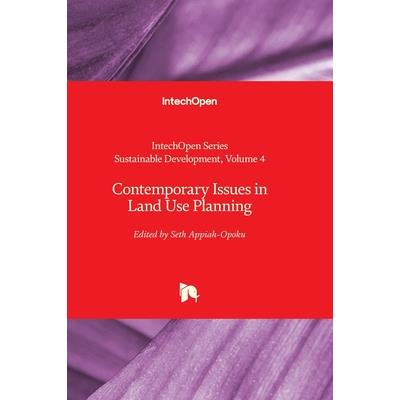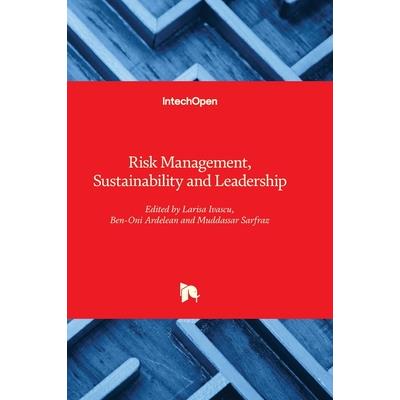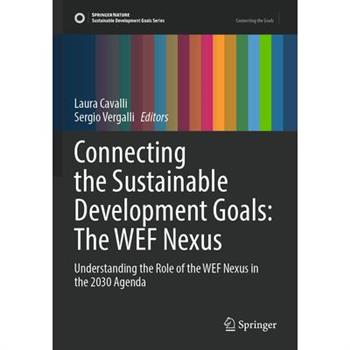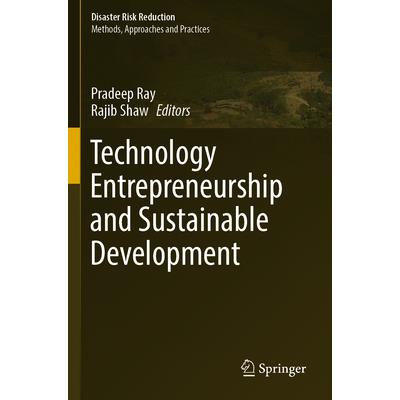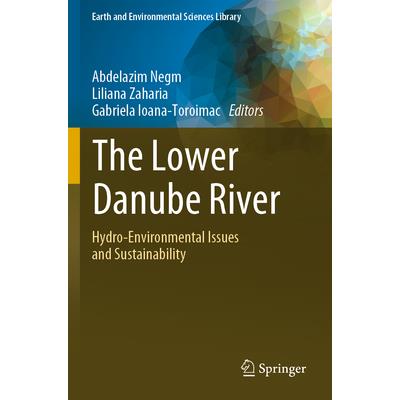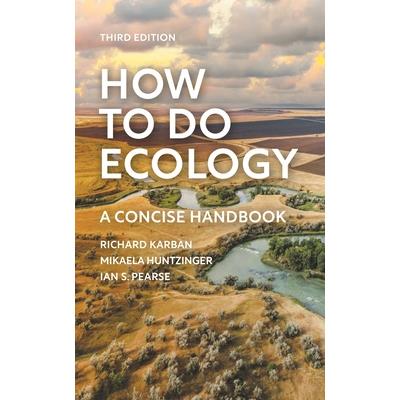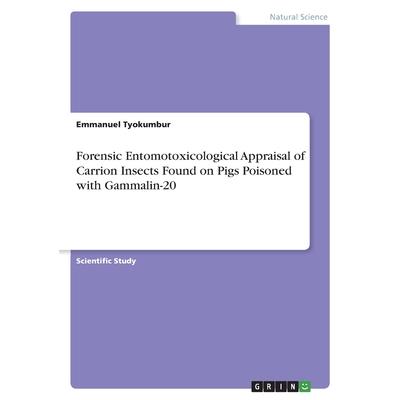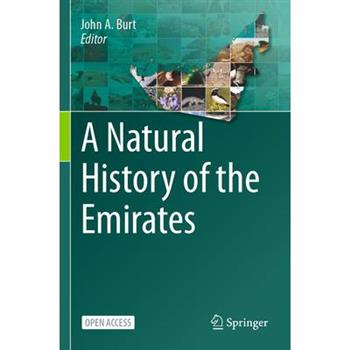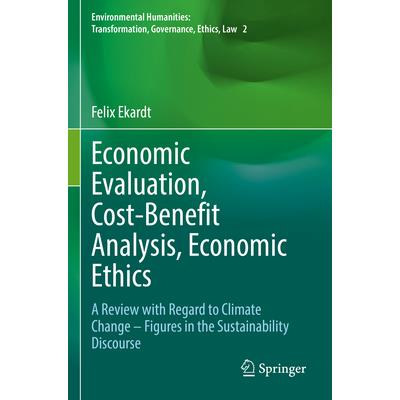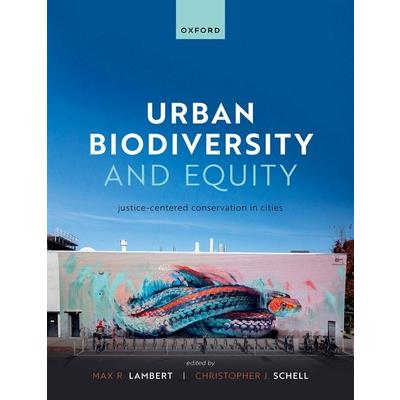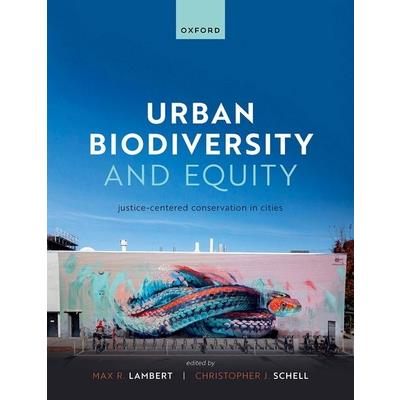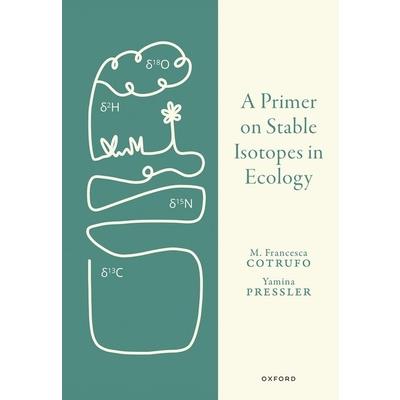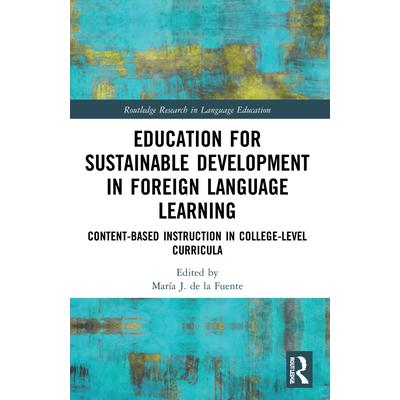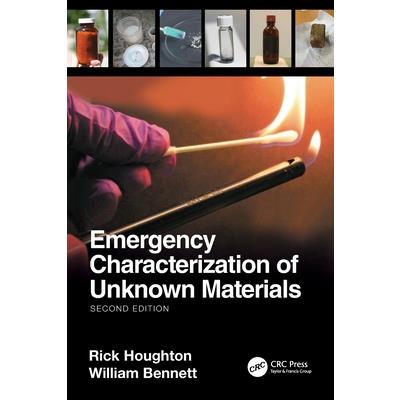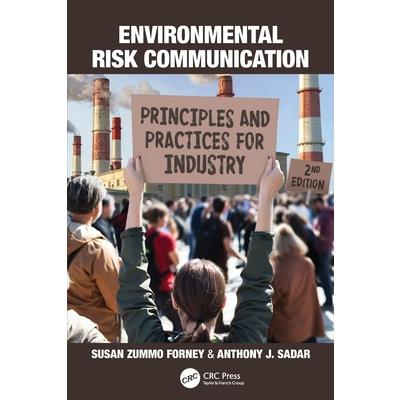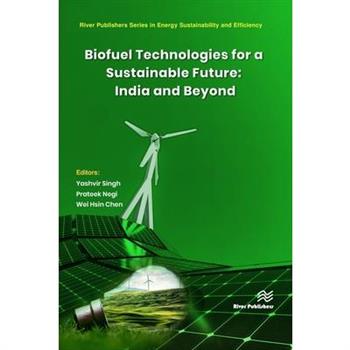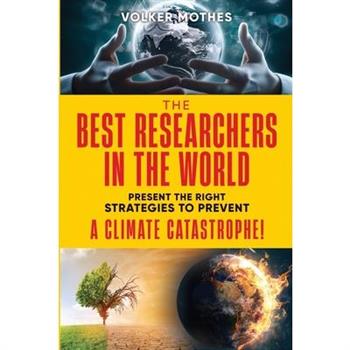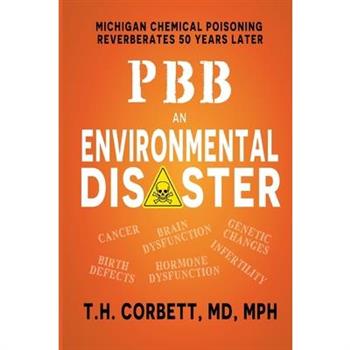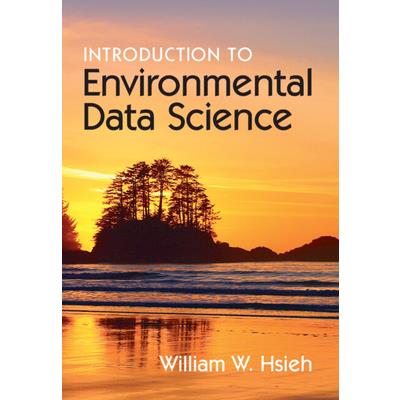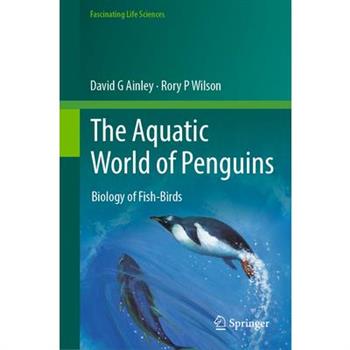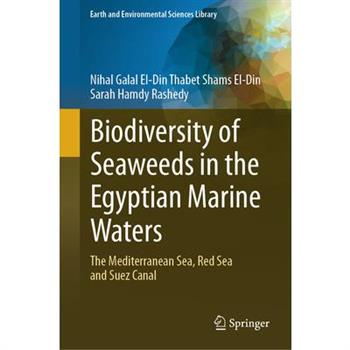Contemporary Issues in Land Use Planning
Land use planning is a complex task that affects all aspects of life in contemporary societies. As such, this book includes contributions from specialists around the globe who have successfully undertaken empirical studies and analysis of rural and urban planning problems. Based on empirical research, this book discusses a variety of topics including agricultural land preservation plans and laws in Iran; using a multi-objective land allocation model to simulate urban growth in the Sarakh border city of Iran; implementation and management of urban land use plans in Ghana; spatiotemporal analysis of urban expansion methods for land use planning; and linking land use changes to policy decisions in Iran. Although limited in scope, the book serves as important reference material on similar contemporary land use planning issues in the developing world.
Risk Management, Sustainability and Leadership
Sustainability is an approach increasingly being used by more and more organizations in the pursuit of a circular economy. Sustainability cannot be achieved without risk management. As such, this book discusses the risk management process, which is integral to meeting organizational objectives. Chapters address such topics as risk analysis, risk management models, communication and leadership, managing risk in different countries and industries, and much more. The book examines innovative approaches that meet the needs of risk management, sustainability, and leadership.
Connecting the Sustainable Development Goals: The Wef Nexus
This contributed volume offers a state-of-the-art, holistic overview of the employment of a Water-Energy-Food (WEF) Nexus approach to implement the seventeen United Nations Sustainable Development Goals (SDGs), with a geographical focus on applications in different African regions. The book is divided into three sections, each composed of several chapters contributed by experts in their respective fields. Section I introduces the WEF Nexus and its role in the achievement of the 2030 Agenda and the SDGs. It highlights the attempt to connect different spheres of sustainability thanks to the Nexus, taking advantage of the existing interlinkages and interconnections among the Goals. Section II proposes a multi-scale and multi-stakeholder approach to various aspects of the Nexus and reviews existing quantitative tools. This section focuses on the issue of resource control and development aims and spotlights how Nexus dynamics influence the achievement of the SDGs as awhole. Section III applies the WEF Nexus to different African regions, which are balancing a rising population and an economic boom with severe vulnerability in the face of climate change.Chapter "Review of the Economic Impact of Water Availability on Food Security and the Related Ecosystems" is available open access under a Creative Commons Attribution 4.0 International License via link.springer.com.
Fundamentals of Environmental Assessment
Based on the "go to" book in the field of ecological risk assessment, this shorter, principles-based, updated textbook is essential for students and new practitioners who want to understand the purposes of environmental assessments and how to achieve them. It includes environmental risks to humans as well as nonhuman populations and ecosystems, and most types of environmental assessments. Drawing upon the author's extensive experience in the field, first as a senior research staff member in the Environmental Sciences Division at Oak Ridge Laboratory and then as science advisor in the United States Environmental Protection Agency's National Center for Environmental Assessment, the book explains fundamental principles and basic techniques and illustrates them with example applications which carry through multiple chapters and make this book a practical and hands-on guide. Both the content and the style are inviting and approachable to different levels of students. Features Integrates human health and ecological assessments. Includes epidemiological, risk, causal, impact, and outcome assessments. Focuses on fundamental principles that are applicable in all nations and legal contexts. Employs an engaging style and draws on the author's practical experience. Explains fundamental concepts in short chapters, making it perfect for beginners in the field. Explains the challenges and rewards of a career in environmental assessment. This book is a practical guide for senior and graduate students in environmental sciences and management, as well as new practitioners of assessment who want to understand the purposes of environmental assessments and how to achieve them.
The Lower Danube River
This book provides essential information and recent findings on hydro-environmental issues in the Lower Danube River, particularly its hydrological and hydromorphological processes; physico-chemical features; climate and water-related hazards; and not only the biodiversity and quality but also the sustainable management and governance of its hydro-environment. Accordingly, it presents a broad range of scientific information on the lower sector of the second-longest river in Europe, which holds major economic importance and has been severely impacted by human pressures, especially since the second part of the last century. The engineering works (e.g. dams, reservoirs, levees, channelization, etc.) on the Danube and its tributaries, despite their benefits to society, have altered its flow and significantly reduced its sediment load, with consequences for hydromorphological processes and aquatic ecosystems. These ecosystems have also been affected by pollutionfrom various sources. To promote sustainable management of the Danube River and its watershed, several strategies and measures have been developed by a number of institutions, from the European level to the national and regional levels (commissions, national authorities, non-governmental organizations, etc.). Compared to the upper and middle sectors of the Danube, the lower sector has received less attention in the international scientific literature in terms of hydro-environmental issues. The book fills this gap and provides current and original insights and findings from recent studies conducted by scientists from three countries drained by the Lower Danube River and its tributaries: Bulgaria, Romania and Serbia. This unique book will be of great scientific interest to professional engineers, policy planners and policymakers in the three countries mentioned above, helping them to implement their own sustainable development plans. It also offers a valuable resource for graduate students, researchers and stakeholders.
How to Do Ecology
The essential insider's guide for ecologists at all career stages-now completely updated and expanded Most books and courses in ecology focus on facts and concepts but do little to explain the process of research. How to Do Ecology provides nuts-and-bolts advice for organizing and conducting a successful research program. This fully updated and expanded edition explains how to ask and answer your own research questions using compelling study design and appropriate stats. Ecology doesn't take place exclusively outdoors, so the book shares invaluable insights on topics such as identifying your goals, developing professional relationships, reading efficiently, and organizing a field season. Because the currency in ecology is publications, it also suggests effective ways to communicate your ideas through journal articles, oral presentations, posters, and grant proposals. This incisive handbook makes explicit many of the unstated rules that ecologists follow and serves as a practical resource for meaningful conversations about ecology. This new edition includes: Expanded emphasis on collecting and interpreting observational dataAn innovative new workshop for generating and evaluating creative research questionsHelpful tips on developing the skills most important to students, navigating your career path, writing efficiently, and more
The Three Ages of Water
A revelatory account of how water has shaped the course of human life and history, and a positive vision of what the future can hold--if we act now From the very creation of the planet billions of years ago to the present day, water has always been central to existence on Earth. And since long before the legendary Great Flood, it has been a defining force in the story of humanity. In The Three Ages of Water, Peter Gleick guides us through the long, fraught history of our relationship to this precious resource. Water has shaped civilizations and empires, and driven centuries of advances in science and technology--from agriculture to aqueducts, steam power to space exploration--and progress in health and medicine. But the achievements that have propelled humanity forward also brought consequences, including unsustainable water use, ecological destruction, and global climate change, that now threaten to send us into a new dark age. We must change our ways, and quickly, to usher in a new age of water for the benefit of everyone. Drawing from the lessons of our past, Gleick charts a visionary path toward a sustainable future for water and the planet.
Forensic Entomotoxicological Appraisal of Carrion Insects Found on Pigs Poisoned with Gammalin-20
Scientific Study from the year 2023 in the subject Biology - Miscellaneous, grade: A, University of Ibadan, language: English, abstract: Forensic entomotoxicological appraisal of carrion insects found on pigs poisoned with Gammalin-20 was carried out at the back of the stadium on the campus of the University of Ibadan. A total of three 3-month old domestic pigs, Sus scrofa L., weighing between 10.5 and 11.3 kg were used as surrogate human models. Two pigs were euthanized with Gammalin-20 by administering 180 ml and 200 ml separately, while the third one was sacrificed without any poison and served as the control experiment. After death was confirmed, each pig was immediately mounted on sawdust and setup at about 50 m apart to allow for arthropod colonization without cross migration, thereby representing three different replicates of the same study. The pigs were left to decompose, and it was discovered that there were five phases of decomposition namely: fresh, bloated, active, advanced and dry decay stages. The decomposition process of the carrions took twenty days in the control experiment and thirty-four days in those treated with Gammalin-20. Four families of flies were found (Calliphoridae, Sarcophagidae, Muscidae and Dermestidae) and seven species (Chrysomya abiceps, Chrysomya regalis, Sarcophaga spp, Phormia regina, Lucilia sericata, Dermestes maculatus and Musca domestica). Their activities on the carrions included consumption of the carrion tissues and using same to propagate their progeny. Calliphoridae was observed to be the most dominant family in nearly all the stages of decomposition with 108 individuals, followed by the Sarcophagidae with 98 individuals, the Muscidae with 85 individuals and the Dermestidae with 10 individuals. Flies found on the carrions were collected with a sweep net and preserved in 70% ethanol for identification. The succession pattern of the flies, their abundance, rate of development, effects of the poison on the developmental
A Natural History of the Emirates
For many people, thoughts of the United Arab Emirates conjure images of ultramodern skyscrapers and rolling sand dunes. However, the Emirates are a rich mosaic of ecosystems and habitats that support surprisingly diverse communities of organisms, and there is growing awareness of the importance of these previously underappreciated natural assets. A Natural History of the Emirates provides a comprehensive overview of the unusual environmental setting of this young nation, and surveys the major ecosystems and the marine and terrestrial organisms occurring across the nation. From freshwater streams in the hyperarid Hajar Mountains to the world's most temperature-tolerant coral reefs, the UAE is home to an astounding variety of uniquely adapted organisms that are providing insights into climate change and how organisms cope with and respond to extreme environmental conditions. The book closes with a section on human interactions with this unique environment, and proposes initiatives to ensure the protection of these unique natural assets into the future. This is an open access book.
Cemeteries of New Orleans
In The Cemeteries of New Orleans, Peter B. Dedek reveals the origins and evolution of the Crescent City's world-famous necropolises, exploring both their distinctive architecture and their cultural impact. Drawing on a fascinating body of research, Dedek takes readers from muddy fields of crude burial markers to extravagantly designed cities of the dead, illuminating a vital and vulnerable piece of New Orleans's identity. Where many histories of New Orleans cemeteries focus on the famous people buried within them, Dedek sets his sights on the marble cutters, burial society members, journalists, and tourists who shaped these graveyards into internationally recognizable emblems of the city. In his detailed exploration of cemetery architecture, Dedek reveals the impacts of ancient and medieval grave traditions and styles, the city's geography, and the arrival of trained European tomb designers, such as the French architect J. N. B. de Pouilly in 1833 and Italian artist and architect Pietro Gualdi in 1851. As Dedek shows, the nineteenth century was a particularly critical era in the city's cemetery design. Traditional French and Spanish patterns prevailed until the first garden cemetery--Metairie Cemetery--was built on the site of an old racetrack in 1872. Like the older walled cemeteries, this iconic venue served as a lavish expression of fraternal and ethnic unity, a backdrop to exuberant social celebrations, and a destination for sightseers. During this time, cultural and religious customs, such as the celebration of All Saints' Day and the practice of Voodoo rituals, flourished within the spatial bounds of these resting places. Over the course of the twentieth and twenty-first centuries, however, episodes of neglect and destruction gave rise to groups that aimed to preserve the historic cemeteries of New Orleans--an endeavor that, according to Dedek, is still wanting for resources and political will. Containing abundant illustrations, The Cemeteries of New Orleans is a comprehensive and intriguing resource on these fascinating historic sites.
Economic Evaluation, Cost-Benefit Analysis, Economic Ethics
The Ecotoxicology of Aquatic Macrophytes
This book focuses on the topic of ecotoxicology of aquatic macrophytes and is wide ranging, including the use of macrophytes for remediation of contaminated sites. Many human activities are threats to the equilibrium of natural ecosystems. Pollution from point and non-point sources can be assessed using a variety of techniques, such as biomonitoring, biomarkers and biosensors. In aquatic ecosystems, biomonitoring of pollutants is mostly conducted by analysis of the tissues of invertebrates and fishes, and biomarker studies are also more widely applied to animals rather than in plants. Aquatic macrophytes occupy a key niche in aquatic ecosystems and provide a range of ecosystem services. In addition to their role in primary production, vegetation plays a key role in the cycling and retention of nutrients and generally acts as a sink for pollutants. Therefore, because of their importance to aquatic ecosystems, more attention should be paid to understanding the fate of pollutants and to developing methods to evaluate the health status of macrophytic plants in freshwater, marine and estuarine environments.
Hard Rock Mine Reclamation
Hard rock mines have significant effects on the territories where they operate, through both infrastructure construction as well as resource use. Due to their extractive activities, these mines store large quantities of wastes at the surface, which can be both physically and chemically unstable. Reclamation aims to return a mine site to a satisfactory state, meaning that the site should not threaten human health or security, should not generate in the long term any contaminant that could significantly affect the surrounding environment, and should be aesthetically acceptable to communities. This book focuses on the reclamation of waste storage areas, which constitute the main source of pollution during and after mine operations, and especially issues with acid mine drainage and neutral contaminated drainage. Features: Provides fundamental information and describes practical methods to reclaim mine-waste facilities Compares the different methods and illustrates their application at sites through case studies Identifies new reclamation issues and proposes solutions to address them Presents existing and new technologies to reclaim mine waste disposal areas from hard rock mines in different climatic conditions Integrates reclamation into mine operations and long term performance of techniques used through an interdisciplinary approach With mine site reclamation a young and still emerging science, the training needs for professionals and students working in this field are huge. This book is written from an engineering point of view and in it the authors identify new reclamation issues and propose well-tested as well as innovative approaches to addressing them. Students in graduate programs focused on mines and the environment as well as professionals already working in departments related to mine site reclamation will find this book to be a valuable and essential resource.
Water Poverty
A water crisis on our immediate horizon is destined to hurt, even kill, millions of children, and the window of opportunity to do something about it is rapidly closing. There is, however, a glimmer of hope that could turn into rays of sunshine. Water is a commodity, and we have just come through some painful times dealing with the shortage of another commodity--energy. For those who lived through the "energy crisis," this book offers a brief trip down memory lane.
Sustainable Approaches in Textiles and Fashion
This second volume in this set of books discusses various sustainable approaches in textiles and the fashion sector with a focus on consumerism and the supply chain. Sustainability is one of the important aspects in today's industrial context, and is no exception to textiles and fashion. Sustainability and strict adherence to the principles of sustainability has become as one of the essential needs again for any industrial sector including textiles and fashion. There are countless measures in terms of various approaches to make the textiles and fashion sector sustainable. These measures, but not limited to, ranging from innovating and implementing new fibres and raw materials, introducing innovative manufacturing methods, chemicals, processes to focus on all the possible stages of a textile product's life cycle from cradle to grave. These approaches include making the textiles and fashion sector circular and also development of new products from sustainable raw materials/processes or combination of both.
Urban Biodiversity and Equity
This advanced textbook moves beyond a basic scientific comprehension of urban ecosystems to understand the essential details of how scientists, policy makers, and practitioners develop solutions to effectively manage urban biodiversity. Such efforts necessitate unravelling the complex components that bolster or constrain biodiversity including human-wildlife interactions, resource availability, climate fluctuations, novel species relationships, and landscape heterogeneity. However, key to an understanding of these processes is also recognizing the tremendous social variation inherent within and across urban areas. The diversity of urban human communities fundamentally shapes how society designs, builds, and manages urban landscapes. This means that urban environmental management unavoidably must account for human social variation. Unfortunately, urban systems have a history and continued legacy of social inequality (e.g., systemic racism and classism) that govern how cities are both built and managed. This novel text not only highlights these connections, but also illustrates the interdisciplinary approaches needed for advancing a new, justice-centred approach to nature conservation. Urban Biodiversity and Equity is suitable for graduate level students and professional researchers from both natural and social science disciplines studying the ecology, conservation, and management of urban environments and their biodiversity. It will also be of relevance and use to a broader audience of urban ecologists, urban planners, and urban wildlife practitioners.
Analysis of biodiversity management strategy issues
Following the example of most African countries, Guinea implemented a strategy to exploit its fishery resources as soon as its economy was liberalized in 1984. This strategy seeks to combine maximization of state revenues from the exploitation of these resources, food security and conservation of biological diversity for their sustainable exploitation. The integrated analysis of such a strategy has shown mixed results, reflecting the impact of the country's political, economic and social environment over the last decade, and the growing demand for fish on the international market. These constraints are detrimental to biodiversity conservation and food security. Solutions are proposed that promote the active involvement of local players in the concerted development of the sector, and enable better control of operations, and the protection and restoration of species and ecosystems, with a view to limiting the causes of biodiversity erosion and ensuring sustainable development in the sector for the benefit of the local community and the State.
Urban Biodiversity and Equity
This advanced textbook moves beyond a basic scientific comprehension of urban ecosystems to understand the essential details of how scientists, policy makers, and practitioners develop solutions to effectively manage urban biodiversity. Such efforts necessitate unravelling the complex components that bolster or constrain biodiversity including human-wildlife interactions, resource availability, climate fluctuations, novel species relationships, and landscape heterogeneity. However, key to an understanding of these processes is also recognizing the tremendous social variation inherent within and across urban areas. The diversity of urban human communities fundamentally shapes how society designs, builds, and manages urban landscapes. This means that urban environmental management unavoidably must account for human social variation. Unfortunately, urban systems have a history and continued legacy of social inequality (e.g., systemic racism and classism) that govern how cities are both built and managed. This novel text not only highlights these connections, but also illustrates the interdisciplinary approaches needed for advancing a new, justice-centred approach to nature conservation. Urban Biodiversity and Equity is suitable for graduate level students and professional researchers from both natural and social science disciplines studying the ecology, conservation, and management of urban environments and their biodiversity. It will also be of relevance and use to a broader audience of urban ecologists, urban planners, and urban wildlife practitioners.
A Primer on Stable Isotopes in Ecology
In the past few decades, the field of ecology has made huge advancements thanks to stable isotopes. Ecologists need to understand the principles of stable isotopes to fully appreciate many studies in their discipline. Ecologists also need to be aware of isotopic approaches to enrich their "toolbox" for further advancing the discipline. A Primer on Stable Isotopes in Ecology is a concise and foundational resource for anyone interested in acquiring theoretical and practical knowledge for the application of stable isotopes in ecology. Readers will gain a more in-depth and complete knowledge of stable isotopes and explore isotopic methods used in ecological research, learning about stable isotope definitions, measurement, ecological processes, and applications in research. Chapters include in-depth descriptions of stable isotopes and their notation, isotope fractionation, isotope mixing, heavy isotope enrichment, and quantification methods by mass spectrometry and laser spectroscopy. The text guides readers to think "isotopically" to better understand research conducted using stable isotopes. The book also provides basic practical skills and activities to apply stable isotope methods in ecological research. It includes 5 activities through which readers can apply their knowledge to real-world problems and improve their skills for interpreting and using stable isotopes in ecological research. This book is designed for students and scientists from different backgrounds who share the common interest in stable isotopes.
Strigolactones, Alkamides and Karrikins in Plants
Strigolactones, Alkamides and Karrikins in Plants: Recent Updates and Future Prospects provides comprehensive knowledge on the various aspects of plant growth, physiology, and communication associated with the three potential biomolecules. Strigolactones have gained much importance in the last decade as potential plant growth regulators. Likewise, alkamides are also known for their plant growth regulatory and pharmacological properties. The evolutionary signi□ficance of karrikins as a potential signaling molecule in different plant groups has been fascinating to plant physiologists and ecologists. This book enables the reader to gain insights into the myriad role of these biomolecules in plant physiology in normal and challenging environments.The book offers comprehensive coverage of the most essential topics, including: Regulation of strigolactone biosynthesis Strigolactones and plant stress tolerance Strigolactones and parasitic plants Alkamides and plant-microbe interaction in rhizosphere Pharmacological potential of alkamides Molecular associations of strigolactones and karrikins Karrikins in plant biotechnology Commercial realities of karrikins in biodiversity restoration In reference to the recent findings in the □field, the authors have provided insights into the role of each biomolecule and analyzed the future prospects of each cover area.The present book is the first of its kind, in which the three molecules have been integrated as potential regulators of plant signaling, communication, and physiology in adverse conditions. Karrikins in plant biology is an emerging field in which its inter-relationship with strigolactones shall pave the way to future investigations of the molecular mechanisms of plant stress tolerance, regulation of root system architecture, and crop yield.
Education for Sustainable Development in Foreign Language Learning
This unique volume utilizes the UNESCO Education for Sustainable Development (ESD) framework to illustrate successful integration of sustainability education in post-secondary foreign language (FL) learning.Showcasing a variety of approaches to using content-based instruction (CBI) in college-level courses, this text valuably demonstrates how topics relating to environmental, social, and cultural dimensions of sustainability can be integrated in FL curricula. Chapters draw on case studies from colleges throughout the US and consider theoretical and practical concerns relating to models of sustainability-based teaching and learning. Chapters present examples of project-, problem-, and task-based approaches, as well as field work, debate, and reflective pedagogies to enhance students' awareness and engagement with sustainable development issues as they acquire a foreign language. Insights and recommendations apply across languages and highlight the potential contribution of FL learning to promote sustainability literacy amongst learners. This text will benefit researchers, academics, and educators in higher education with an interest in Modern Foreign Languages, sustainability education, training, and leadership more broadly.
The Fundamental Processes in Ecology
This thought-provoking book introduces a way to study ecosystems that is resonant with current thinking in the fields of earth system science, geobiology, and planetology. Instead of organizing the subject around a hierarchical series of entities (e.g. genes, individuals, populations, species, communities, and the biosphere), the book provides an alternative process-based approach and proposes a truly planetary view of ecological science. It demonstrates how the idea of fundamental ecological processes can be developed at the systems level, specifically their involvement in control and feedback mechanisms. This enables the reader to reconsider fundamental ecological processes such as energy flow, guilds, trade-offs, carbon cycling, and photosynthesis, and to put them in a global (and even planetary) context. In so doing, the book places a much stronger emphasis on microorganisms. Since publication of the first edition in 2006, ever growing societal concern about environmental sustainability has ensured that the earth system science/Gaian approach has steadily gained traction. Its integration with ecology is now more important than ever if ecological science is to effectively contribute to the massive problems and future challenges associated with global environmental change. The Fundamental Processes in Ecology is an accessible text for senior undergraduates, graduate student seminar courses, and researchers in the fields of ecology, environmental sustainability, earth system science, evolutionary biology, palaeontology, history of life, astrobiology, planetology, climatology, geology, and physical geography.
The Fundamental Processes in Ecology
This thought-provoking book introduces a way to study ecosystems that is resonant with current thinking in the fields of earth system science, geobiology, and planetology. Instead of organizing the subject around a hierarchical series of entities (e.g. genes, individuals, populations, species, communities, and the biosphere), the book provides an alternative process-based approach and proposes a truly planetary view of ecological science. It demonstrates how the idea of fundamental ecological processes can be developed at the systems level, specifically their involvement in control and feedback mechanisms. This enables the reader to reconsider fundamental ecological processes such as energy flow, guilds, trade-offs, carbon cycling, and photosynthesis, and to put them in a global (and even planetary) context. In so doing, the book places a much stronger emphasis on microorganisms. Since publication of the first edition in 2006, ever growing societal concern about environmental sustainability has ensured that the earth system science/Gaian approach has steadily gained traction. Its integration with ecology is now more important than ever if ecological science is to effectively contribute to the massive problems and future challenges associated with global environmental change. The Fundamental Processes in Ecology is an accessible text for senior undergraduates, graduate student seminar courses, and researchers in the fields of ecology, environmental sustainability, earth system science, evolutionary biology, palaeontology, history of life, astrobiology, planetology, climatology, geology, and physical geography.
Assembling Petroleum Production and Climate Change in Ecuador and Norway
This book addresses some of the controversies and uncertainties associated with reducing the extensive exploitation of fossil fuels due to their role in global warming. Elisabeth Marta T籀mmerbakk explores why a transition towards a post-carbon society is so difficult to accomplish by examining how the relationship between petroleum production and climate change is politically framed and negotiated in contested cases. This question is approached through a process-oriented comparative case study of Lofoten, located in the Norwegian Sea above the Arctic Circle, and Yasun穩-ITT (Ishpingo, Tambococha, and Tiputini) located in the Ecuadorian Amazon: regions that both belong to oil-exporting countries with highly oil-dependent economies. T籀mmerbakk draws on rich empirical data that includes qualitative interviews with subjects in both countries and applies an Actor-Network Theory framework to show that oil and climate are intricately entangled in knowledge and policy practices. Overall, Assembling Petroleum Production and Climate Change in Ecuador and Norway provides an in-depth examination of how climate science and petroleum extraction are negotiated, adapted, assembled, and coordinated with other national policies and political aims. This book will be of great interest to students and scholars of petroleum production, climate change, environmental policy, and environmental sociology.
Emergency Characterization of Unknown Materials
Emergency Characterization of Unknown Materials, Second Edition is fully updated to serve as a portable reference that can be used in the field and laboratory by workers who are responsible for a safe response to and management of unknown hazardous materials. As with the first edition, the book emphasizes public safety and the management of life safety hazards, including strategies and emerging technologies to identify the hazards presented by an unknown material. When responding to a hazardous material emergency involving an unknown substance, firefighters and HAZMAT teams are primarily interested in protecting public safety. The book details risk analysis procedures to identify threats and vulnerabilities, analyzing them to determine how such risks can be eliminated or reduced. If an unknown material can be identified with a high degree of confidence, that can considerably change the response, and measures to be taken. In addition, the book covers practical field applications with updated and additional examples of field instruments. The hazard identification methods presented are intended for use by frontline workers. The test methods presented involve manipulation of small sample amounts - using, literally, a hands-on approach. The three technologies used by first responders and military personnel to identify unknown chemicals, Raman spectroscopy, FTIR spectroscopy and high-pressure mass spectroscopy, are covered in depth. Features Presents how to identify unknown materials and, if identification is not possible, to characterize the hazards of the material Offers practical examples to introduce new first responders to hazardous materials response Provides up-to-date field applications of the latest developments in commercially available instrumentation Details practical sample manipulations to help the reader successfully identify materials with popular high-end instrumentation Includes several examples of spectra and describes ways in which the reader can utilize data to inform decision making New coverage to this edition includes a chapter and content that focuses on sample manipulation and separations using instruments developed and revised since the first edition was published. These sample manipulations may be performed in the field with a very simple toolkit, which is fully outlined and explained in detail. Identifying the hazards of the unknown substance is essential to plan for response, contingencies and sustained actions. As such, Emergency Characterization of Unknown Materials, Second Edition will be a welcome and essential resource to all response and safety professionals concerned with hazardous materials.
Environmental Risk Communication
This second edition is updated and expanded with new chapters to help understand contemporary concerns related to communication challenges, including those in the social media realm, while dealing with current environmental risks. Written by experienced communication experts, this book is an insider's guide to effective messaging.
Sustainable Approaches in Textiles and Fashion
This third volume in the set of books is dedicated to various sustainable approaches in textiles and fashion sector with a focus on fibres and raw materials employed. Sustainability is one of the important aspects in today's industrial context, which is followed by every industrial sector with no exception to textiles and fashion. Sustainability and strict adherence to the principles of sustainability has become as one of the essential needs again for any industrial sector including textiles and fashion. There are countless measures in terms of various approaches to make the textiles and fashion sector sustainable. These measures, but not limited to, ranging from innovating and implementing new fibres and raw materials, introducing innovative manufacturing methods, chemicals, processes to focus on all the possible stages of a textile product's life cycle from cradle to grave. These approaches include making the textiles and fashion sector circular and also development of new products from sustainable raw materials/processes or combination of both.
Biofuel Technologies for a Sustainable Future
This book examines the key aspects that will define future sustainable energy systems: biofuels, green nanomaterials and the production of bioethanol and bio-hydrogen from bio-waste. The book clearly illustrates the requirement for a unified engineering approach based on solid mathematical and engineering principles.
THE BEST RESEARCHERS IN THE WORLD Present the Right Strategies to Prevent a Climate Catastrophe!
Book Description.Dreading a Future Climate Catastrophe? Dive into the ULTIMATE Guide on How to Stop GlobalWarming... According to the Best Climate Change Researchers!Want to understand thecauses and consequences of climate change?Worried about the rising sea levels anddamage caused by tornadoes?Curious about the real solutions to prevent climate changeand lower the Earth's temperature?In "The Best Researchers in The World Present theRight Strategies to Prevent a Climate Catastrophe", the world's top experts unite to tackle the urgentissue of climate change. Explore the comprehensive analysis of the causes and effects of climatechange, and most importantly, discover practical and effective strategies to combat it.Uncoverthe knowledge that has never been consolidated in a single book before! From reducing CO2 concentrationsto eradicating water scarcity, this book presents innovative solutions that will reshape our planet'sfuture.Get ready to be surprised and enlightened as you delve into the causes of climatechange and discover the power of collective action!With this book, youwill: Gain In-Depth Understanding: Gain a comprehensive understanding of climatechange, its causes, and its consequences, empowering you to make daily informed decisions.GetPractical Solutions: Discover actionable strategies to combat climate change, from reducing CO2concentrations to preventing rising sea levels and damage from tornadoes.Study Cutting-EdgeResearch: Access the latest research and insights from the world's leading researchers and inventors inthe field of climate science.Learn About Future Sustainability: Learn how to create asustainable future for succeeding generations of humans and animals, ensuring a healthier and thrivingplanet.Create Global Impact: Contribute to the collective effort of addressing climatechange by implementing the right strategies and making a positive impact on a globalscale.Begin a Thought-Provoking Exploration: Dive into thought-provoking discussions ontopics like artificial photosynthesis, mega cities, earthquake-safe houses, and more, envisioning a future withinnovative solutions.And so much more!What makes "The BestResearchers in The World Present the Right Strategies to Prevent a Climate Catastrophe" standout?Authoritative Research: This book brings together the best researchers and inventors inthe world, ensuring you receive expert insights and scientifically backed information.ActionableSolutions: The strategies presented in this book are practical and feasible, providing you with the toolsand knowledge to actively contribute to preventing climate catastrophe.Realistic Hope: Byunderstanding the causes and solutions to climate change, you'll gain hope and confidence that together, wecan make a positive impact on the future of our planet.Join the movement and become part of thesolution by clicking on "Buy Now with 1-Click" today!Let yourself be surprised. You will not regret it.Read this book and finally understand what really causes climate change and what we humans can do about it. https: //www.youtube.com/watch?v=PMFSK_IkGagISBN 9783981470857www.kircess.de
Pbb
PBB: An Environmental Disaster - Michigan Chemical Poisoning Reverberates 50 Years Later is intended to provide the reader with an understanding of the chemical catastrophe that occurred in Michigan in the 20th century, and to offer a cautionary tale for action in the 21st.The book is organized into three general subject areas: 1) The geology and history of the region around St. Louis, Michigan; 2) The history of the Michigan Chemical Company, recounting the story of the PBB contamination disaster and the creation of an immense Superfund site; and 3) A discussion of the biochemical and genomic factors through which toxic chemicals affect human health, followed by a discussion of the effects of PBB and other Michigan Chemical products on Michigan's environment and on the health of the Michigan Chemical employees, the residents of St. Louis, the region's farmers and their families, and the Michigan consuming public during the years 1973-1977.
Bioactive Compounds in Fermented Foods
The volume reviews different types of bioactive components associated with food fermentation and their impact on human health. The diversity of microorganism responsible for the production of different types of fermented foods and beverages includes bacteria, yeasts, and fungi. Biotransformation of food constituent by microorganisms occurs during fermentation processes for the production of fermented food and in the gastrointestinal tract by gut microorganisms. This biotransformation results in production of specific bioactive compounds that are responsible for a wide range of health benefits. The bioactive compounds discussed in this book includes polyphenols, bioactive peptides, fibrinolytic enzymes, gama-amino butyric acids (GABA) exopolysaccharides, probiotic, prebiotic, symbiotic and antinutritional factors. These bioactive compounds are responsible for health benefits such as antioxidant, antihypertension, antimicrobial, cholesterol lowering, anticancer, obesity and antithrombotic properties. Advanced research in the field of food fermentation and their health benefits have resulted in commercialization of some of the fermented foods as functional foods. The traditional fermented foods consumed in different parts of the world and their health benefits are discussed in detail and the book concludes with recent advances in microbial transformation during gut fermentation and their impact on human health. There has been increasing interest among researchers on the proposed title in the last decade and the book brings updated information on research and advances in different types of health benefits exhibited by bioactive compounds in a wide range of fermented foods.
Ecological Studies of Meghraj Range Forest, Aravalli, Gujarat
The Meghraj range forest is situated amidst picturesque natural surroundings on the eastern border of Gujarat, in a beautiful valley shut in well-wooded hills through which river Vatrak flows. Present study was carried out to explore various ecological parameters of this forest range. This included plant diversity study using diversity indices, phytosociological studies of the vegetation, Soil analysis and leaf litter biomass analysis. Some of the suggestion measures for the biodiversity conservation and regulation of ecosystem has also been proposed on the basis of the study. This book will be helpful for the students and researchers who wants to work on forest area.
Histological study of Lavatera maritima in northwest Algeria
The present work concerns an auto-ecological study of Lavatera maritima (Malvaceae) in the north-western region of Algeria, for this study we base ourselves on bioclimatic and histological criteria. On the bioclimatic plan and according to the climmagram of Emberger, the station of Beni-Saf is in the semi-arid with hot winter for the two periods, the goal of this bioclimatic study is to make a comparison between the old period (seltzer) and the new period (ONM). The histological study allowed us to know the tissues of the organs following the leaf, the stem, the root and the different tissues such as the xylem, the phloem, ... etc
Rangeland Wildlife Ecology and Conservation
This open access book reviews the importance of ecological functioning within rangelands considering the complex inter-relationships of production agriculture, ecosystem services, biodiversity, and wildlife habitat. More than half of all lands worldwide, and up to 70% of the western USA, are classified as rangelands-uncultivated lands that often support grazing by domestic livestock. The rangelands of North America provide a vast array of goods and services, including significant economic benefit to local communities, while providing critical habitat for hundreds of species of fish and wildlife. This book provides compendium of recent data and synthesis from more than 100 experts in wildlife and rangeland ecology in Western North America. It provides a current and in-depth synthesis of knowledge related to wildlife ecology in rangeland ecosystems, and the tools used to manage them, to serve current and future wildlife biologists and rangeland managers in the working landscapes of the West. The book also identifies information gaps and serves as a jumping-off point for future research of wildlife in rangeland ecosystems. While the content focuses on wildlife ecology and management in rangelands of Western North America, the material has important implications for rangeland ecosystems worldwide.
Climate Changes Mitigation and Sustainable Bioenergy Harvest Through Animal Waste
The valuable characteristics of animal waste materials in terms of climatic change impact and bioenergy production are discussed in this book. Reutilization of such wastes for bioenergy harvest is the prime focus; the great need for future animal waste recycling is also depicted.Major topics discussed are types of livestock waste - poultry and dairy, methods and management of waste utilization and storage, application of animal waste in bioenergy production, economics of waste utilization, novel disposable techniques, circular bioeconomy, pollution, and water quality. Furthermore, utilization of animal waste for resource conservation and environmental protection is discussed, such as potential materials for green biochemicals. Resource recovery can, therefore, forestall the shortage of natural resources and, at the same time, can greatly reduce waste-disposal problems and energy crises. Many alternatives to waste disposal, either currently available or under study, focus on the recovery of material or energy. In a world of diminishing resources and increasing needs, each opportunity for the recycling of animal waste materials has been examined.This book significantly contributes toward climate change mitigation through better environmental solutions. A better understanding of animal waste recycling to mitigate climate changes has been portrayed in order to generate discussions among researchers and administrators. Environmental implications of animal waste are of prime importance in climate change scenario. Such wastes also harbor zoonotic pathogens that are transported in the environment.Finally, it has been tried out to collect ideas and experience in multiple aspects of animal waste management for climate change mitigation and bioenergy harvest.
Pbb
PBB: An Environmental Disaster - Michigan Chemical Poisoning Reverberates 50 Years Later is intended to provide the reader with an understanding of the chemical catastrophe that occurred in Michigan in the 20th century, and to offer a cautionary tale for action in the 21st.The book is organized into three general subject areas: 1) The geology and history of the region around St. Louis, Michigan; 2) The history of the Michigan Chemical Company, recounting the story of the PBB contamination disaster and the creation of an immense Superfund site; and 3) A discussion of the biochemical and genomic factors through which toxic chemicals affect human health, followed by a discussion of the effects of PBB and other Michigan Chemical products on Michigan's environment and on the health of the Michigan Chemical employees, the residents of St. Louis, the region's farmers and their families, and the Michigan consuming public during the years 1973-1977.
Phycoremediation Processes in Industrial Wastewater Treatment
Increasing population and industrialization are the key pollutant contributors in water bodies. The wastes generated by industries are highly hazardous for humans and the ecosystem and require a comprehensive and effective treatment before being discharged into water bodies. Over the years, many up gradations have been introduced in traditional water treatment methods which were expensive and ineffective especially for removal of toxic pollutants. Phycoremediation has been gaining attention due to its mutual benefit in wastewater treatment and for valuable algae biomass production. Wastewater, especially sewage and industrial effluents, is rich in pathogenic organisms, organic and inorganic compounds and heavy metals that adversely affect human and aquatic life. Microalgae use these inorganic compounds and heavy metals for their growth. In addition, they also reduce pathogenic organisms and release oxygen to be used by bacteria for decomposition of organic compounds in a secondary treatment. In this book, the potential of microalgae in wastewater treatment, their benefits, strategies, and challenges are discussed. The increasing need of finding innovative, low-cost, low-energy, sustainable and eco-friendly solutions for wastewater treatment makes the publication of a book on phycoremediation timely and appropriate.Features: (1) Deals with the most emerging aspects of algal research with special reference to phycoremediation.(2) Studies in depth diversity, mutations, genomics and metagenomics study(3) An eco-physiology, culturing, microalgae for food and feed, biofuel production, harvesting of microalgae, separation and purification of biochemicals.
Introduction to Environmental Data Science
Statistical and machine learning methods have many applications in the environmental sciences, including prediction and data analysis in meteorology, hydrology and oceanography; pattern recognition for satellite images from remote sensing; management of agriculture and forests; assessment of climate change; and much more. With rapid advances in machine learning in the last decade, this book provides an urgently needed, comprehensive guide to machine learning and statistics for students and researchers interested in environmental data science. It includes intuitive explanations covering the relevant background mathematics, with examples drawn from the environmental sciences. A broad range of topics is covered, including correlation, regression, classification, clustering, neural networks, random forests, boosting, kernel methods, evolutionary algorithms and deep learning, as well as the recent merging of machine learning and physics. End-of-chapter exercises allow readers to develop their problem-solving skills, and online datasets allow readers to practise analysis of real data.
An Integrated Modelling Approach to Design Cost-Effective AES for Agricultural Soil Erosion and Water Pollution
Agri-environment schemes (AES) is frequently adopted for tricky environmental issues. One key concern for AES design is to optimize the cost-effectiveness. For issues of cost-effective prevention of agricultural soil erosion and non-point source water pollution, although models that assess both environmental effects and economic costs of land use measures have been developed, they typically adopt a planning perspective instead of designing AES with the role of farmers being considered. This book presents a spatially explicit novel integrated modelling approach that addresses the shortcoming by combining several components. The relevance of the modelling approach is demonstrated in this book by applying it to the Baishahe watershed in Shanxi province in China. The results show that the modelling approach is robust to design cost-effective AES, i.e. under given budget the maximum environmental effect in the study region could be attained with a set of designed payments for measures in AES. The developed modelling approach is generic and powerful for application in all kinds of agricultural watersheds with various sizes.
The Aquatic World of Penguins
Centuries ago, when penguins were first encountered by European explorers, they were not thought to be birds but rather a fish-like relative. Subsequent accumulation of knowledge has shown penguins to be an avian species with unrivaled aquatic attributes, owing to a number of evolutionary adaptations: shape change, low drag, ability to regulate buoyancy, and extraordinary surface compliancy from their featheration. They are indeed the most extremely specialized diving bird, having given up flight (which otherwise is hugely advantageous) to the benefit of underwater prowess (such as speed, maneuverability and an ability to exploit an extraordinary range of depths). This flightlessness, however, also comes with costs that are substantial for a seabird (such as the inability to cover large distances quickly in reaction to ephemeral prey); and the energy needed to cope with moving through an aqueous environment, which is more resistant than air. For penguins, the high energetic costs inexploiting the ocean environment thus makes them especially sensitive to changes in food availability or their access to their prey. While a number of "penguin books" cover the natural history, mainly of breeding aspects, few address in much detail the incredible aquatic nature of these creatures. A huge amount of information has been amassed over recent past decades thanks to dramatic advances in microelectronics, bio-logging and maturation of some long-term studies of penguin life history. This work represents an integration of all these data with charts, maps and graphs, along with richly illustrated photos by experts in the field.
Key Methods in Geography
Key Methods in Geography is the perfect introductory companion, providing an overview of qualitative and quantitative methods for human and physical geography. The fourth edition of this essential and accessible primer covers the breadth of the discipline and offer critical and contextual perspectives on research methods. New coverage takes account of newer technologies and practice, and 9 new chapters bring greater diversity of positionality and perspective to the volume, including decolonial methods, predicting, visualizing and modelling climate and environmental change, and writing up research. Case study examples, summaries and exercises have been included in each chapter to enable learning. This is vital reading for any student undertaking a Geography Methods module as well as a valuable resource for any student embarking on independent research as part of their degree.
River Basin Management - Under a Changing Climate
River Basin Management - Under a Changing Climate is a collection of relevant research, experiments, and case study chapters. This book offers a comprehensive overview of recent developments in water resources planning, monitoring, and management using in situ measurements, modeling, and community participation. The book includes five sections and fourteen chapters that discuss water resources management, focusing on river basins, which includes quantifying water resources, evaluating water quality, and evaluating the impact of hydraulic structures on water resources management. Chapters also discuss the critical role of community/stakeholders in water resources, planning, monitoring, conservation, and management at smaller to larger river basins.
Sustainable Smart Cities - A Vision for Tomorrow
Rapid urbanization has led to many problems in cities, including climate change, deteriorating infrastructure, disorganized labor forces, and diminishing resources. This book presents a well-grounded vision for the kind of future city we need to live in by encapsulating the most salient and practical implementations of the many responsibilities and functions that characterize the modern metropolis. Furthermore, this book uses the idea of sustainability to show and analyze many theories and approaches to handling the topic of modern sustainable smart cities, as well as the effects they have on human life and the natural environment through sustainable development objectives and aims supported by the United Nations.
Progress in Microalgae Research - A Path for Shaping Sustainable Futures
Progress in Microalgae Research - A Path for Shaping Sustainable Futures consolidates the latest research, developments, and advances in the field of microalgae biotechnology. The book's chapters take a close look at and highlight the wide commercial potential of microalgae-based processes and products. This book is a useful resource for researchers and academic and industry professionals in the field of microalgae biotechnology.




